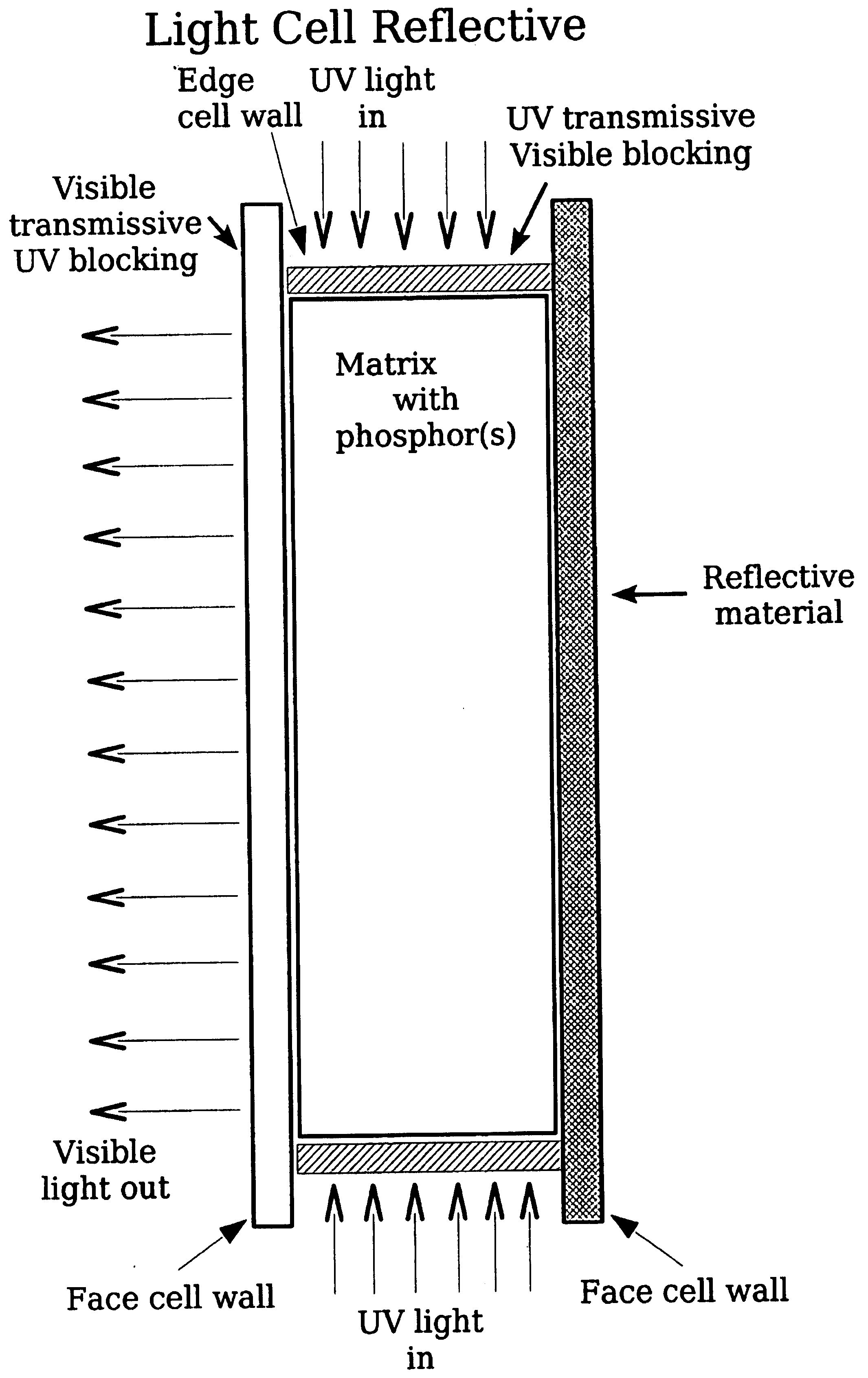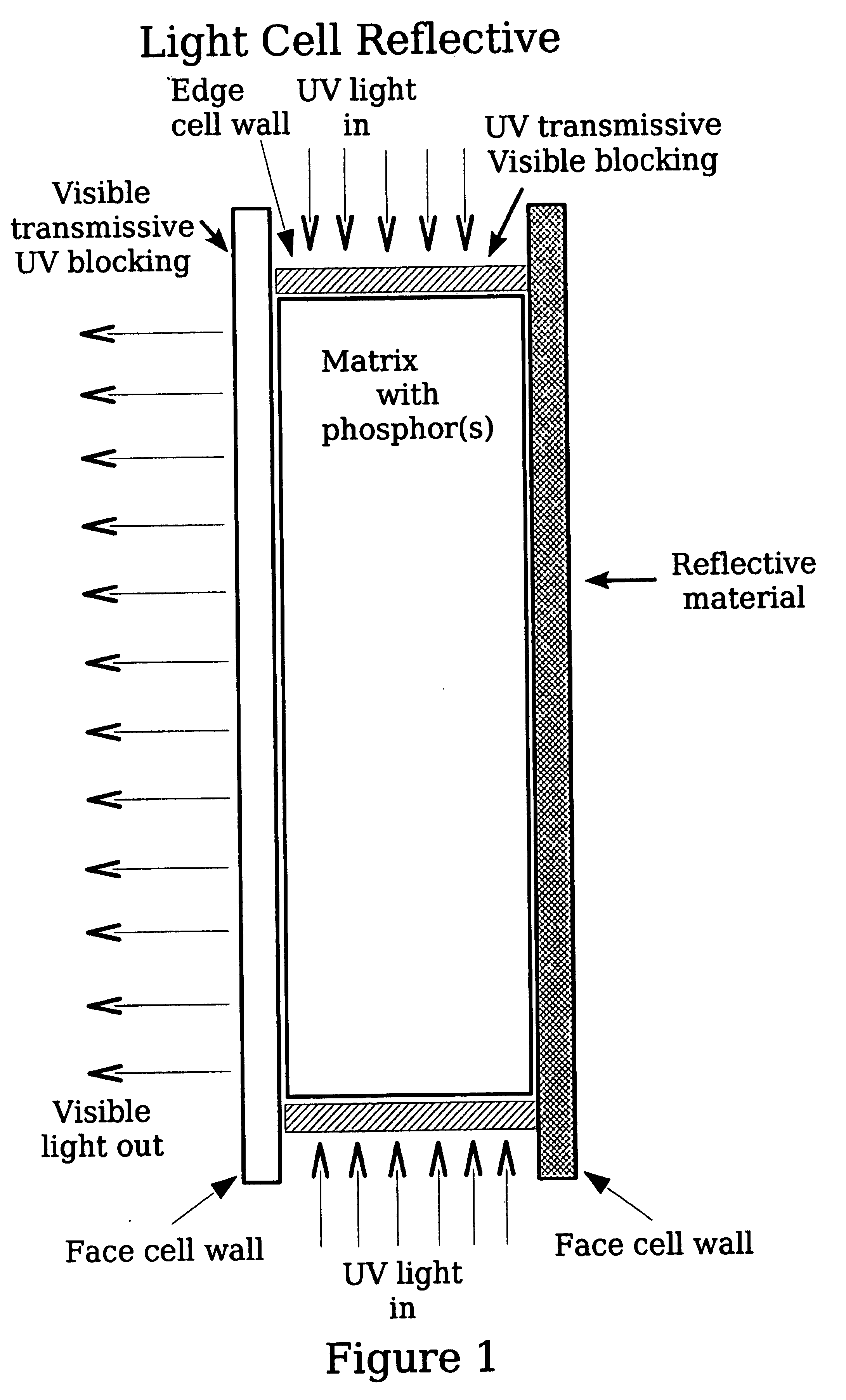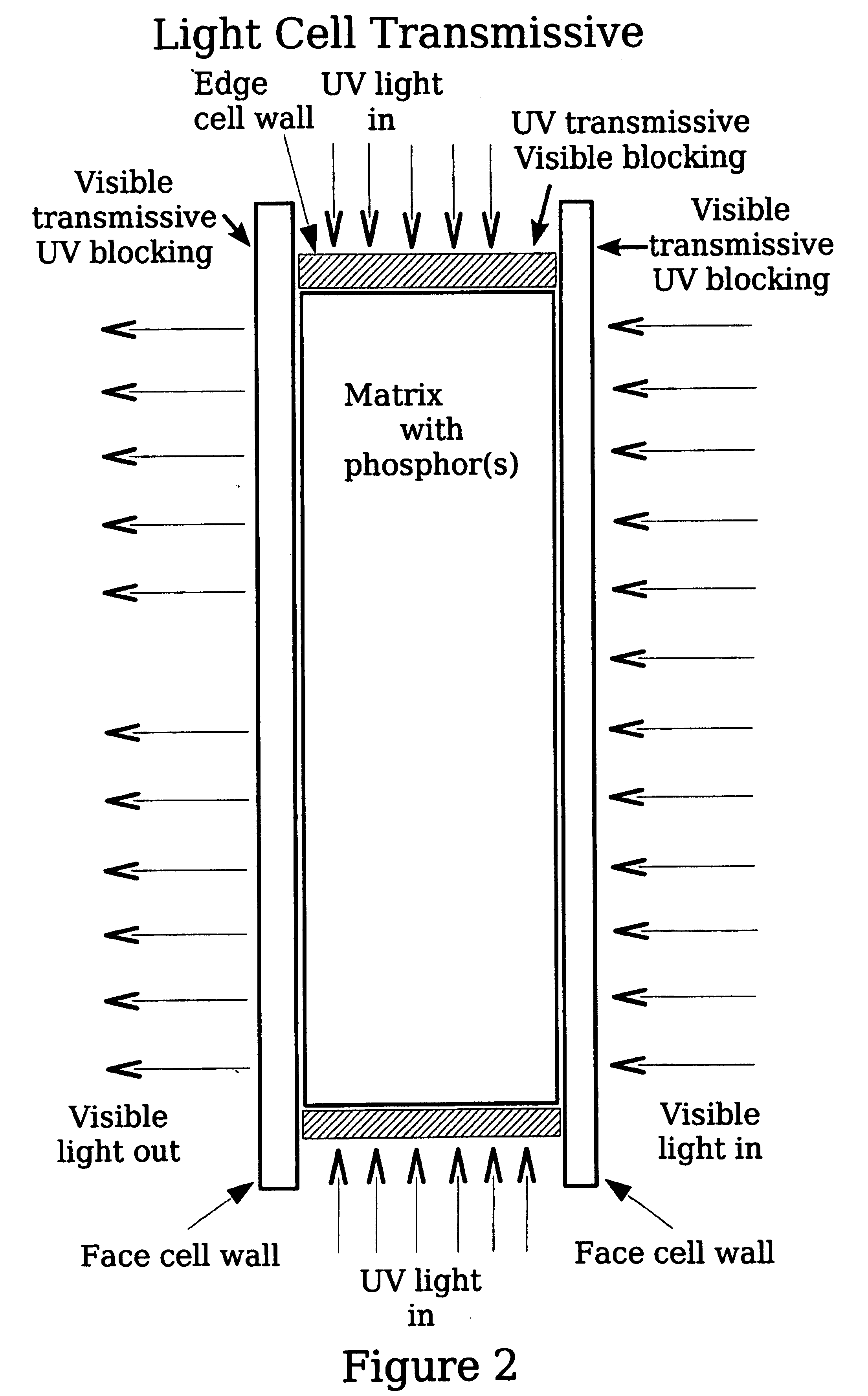Color-tuned volumetric light using high quantum yield nanocrystals
a quantum yield, volumetric light technology, applied in the field of light and display, can solve the problems of not having achieved no good use of carbon arcs, and inability to achieve a revolution in lighting, so as to enhance visible light medical observation and imaging techniques, enhance color rendering, and improve the effect of color rendering
- Summary
- Abstract
- Description
- Claims
- Application Information
AI Technical Summary
Benefits of technology
Problems solved by technology
Method used
Image
Examples
Embodiment Construction
[0028] A single tunable light source device is described in this disclosure, hence will be referred to as a lamp unit. The art is advanced with a lamp unit is composed of two or more light cells and separate UV illuminator for each light cell. Each light cell is a device that contains a phosphor or a mixture of different phosphors with different properties in a support matrix. Hereafter ‘phosphor’ will indicate a single phosphor or a mix of different phosphors. When the light cell is illuminated with UV light it causes the contents of the light cell to fluoresce emitting visible light from the phosphors which then exits the light cell.
[0029] The preferred support matrix, in this embodiment, is silica aerogel, but it could be any material that is capable of supporting a dispersion of phosphors and which is also UV and visible light transmissive. Some of the possible materials that meet these requirements are acrylic plastics and water.
[0030] A component cell of this lamp is compose...
PUM
 Login to View More
Login to View More Abstract
Description
Claims
Application Information
 Login to View More
Login to View More - R&D
- Intellectual Property
- Life Sciences
- Materials
- Tech Scout
- Unparalleled Data Quality
- Higher Quality Content
- 60% Fewer Hallucinations
Browse by: Latest US Patents, China's latest patents, Technical Efficacy Thesaurus, Application Domain, Technology Topic, Popular Technical Reports.
© 2025 PatSnap. All rights reserved.Legal|Privacy policy|Modern Slavery Act Transparency Statement|Sitemap|About US| Contact US: help@patsnap.com



